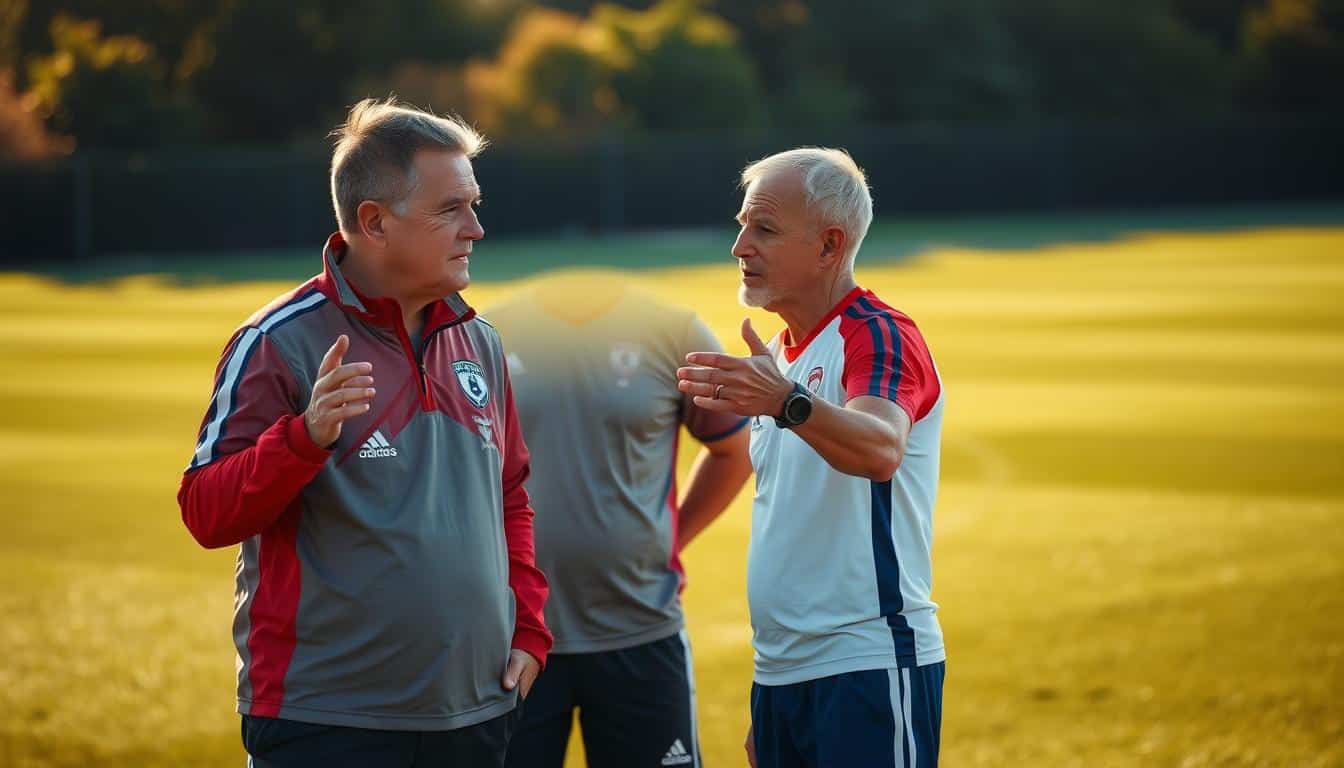How to Communicate with Soccer Coaches: A Step-by-Step Guide

Building a strong connection with your soccer coach can transform your experience on the field. Whether you’re a player or a parent, clear dialogue fosters trust, improves performance, and creates a positive team environment. Coaches rely on both words and actions to guide their teams—so knowing how to engage effectively matters.
Start by focusing on simplicity. Brief, direct messages during practice or games help avoid confusion. For example, a coach might use hand signals to adjust formations or offer quick verbal cues like “shift left” to keep play flowing. Non-verbal cues, such as eye contact or body language, also play a big role in reinforcing instructions.
Honest feedback strengthens relationships over time. Studies show that short, specific interactions build rapport faster than lengthy talks. Ready to learn practical methods? Let’s break down the steps to make every conversation count.
Key Takeaways
- Trust grows when communication is clear and consistent.
- Simple language prevents misunderstandings during fast-paced games.
- Non-verbal cues like gestures are as important as spoken words.
- Regular feedback helps align player and coach expectations.
- Strong relationships rely on mutual respect and active listening.
Fostering Authentic Coach-Player Connections
Creating genuine bonds between coaches and players starts with intentional moments. A quick chat about a science project or remembering a birthday shows you care beyond drills. These small efforts build trust—the foundation for strong team dynamics and growth.
Building Trust on the Field
Listen more than you speak. Ask specific questions like, “How did your math test go?” instead of generic ones. Players notice when you recall details—it proves they matter. Nodding during conversations and maintaining eye contact reinforces respect.
Encouraging Open Dialogue during Practice
Use water breaks to connect. For example:
- “What’s your favorite part of today’s session?”
- “Any new skills you want to try next week?”
This approach makes feedback feel natural, not forced. Pair brief talks with clear instructions to balance camaraderie and focus. Over time, these interactions help tailor coaching methods to individual needs.
How to communicate with soccer coaches
Effective dialogue between athletes and mentors hinges on simplicity and precision. When everyone understands their role, drills become smoother, and team cohesion improves. Let’s explore practical ways to sharpen your approach.
Straightforward Language for Clarity
Short phrases like “mark tighter” or “pass early” cut through noise during fast-paced drills. Complex tactics? Break them into steps. For example, teach overlapping runs by first explaining positioning, then timing. This method helps players absorb details without overwhelm.

Pair verbal cues with gestures—pointing to space while saying “push up” reinforces the message. Video analysis works wonders here too. Reviewing clips with concise commentary (“notice your angle here”) makes adjustments tangible.
Feedback Methods that Boost Confidence
Focus on one actionable tip per interaction. Instead of “your defense needs work,” try “square your shoulders before challenging.” Specific praise (“great recovery sprint”) also builds trust. Need inspiration? These soccer tips show how small tweaks boost your game.
End chats with a question: “What felt strongest today?” This invites reflection while keeping exchanges positive. Over time, these habits create a culture where communication fuels growth, not confusion.
Navigating Parent and External Interactions
Strong connections beyond the field shape opportunities for growth. Whether emailing college coaches or chatting with parents, your approach sets the tone for collaboration. Clear, respectful communication builds bridges that support player development and team success.
Emails That Make an Impact
College coaches receive hundreds of messages weekly. Stand out by personalizing every email. Mention specific details about their program, like recent wins or training styles. Include your:
- Full name and position
- Upcoming game schedule
- Academic achievements
Keep subject lines concise (“Midfielder Seeking 2024 Roster Spot”). Proofread for grammar—errors suggest carelessness. A polished message shows you value their time.
| Element | Good Example | Avoid |
|---|---|---|
| Subject Line | “Central Defender with 4.0 GPA” | “Hey Coach” |
| Body Content | References team’s defensive strategy | Generic praise |
| Sign-off | “Looking forward to your insights” | “Hit me up” |
Mastering In-Person Moments
First impressions matter. Offer a firm handshake and maintain eye contact during introductions. If discussing concerns with parents, focus on solutions: “Let’s work together on Jamie’s passing accuracy.”
Social media profiles act as silent ambassadors. Keep posts positive and avoid criticizing teams or coaches. Share highlights that showcase skills and sportsmanship. Balance professionalism with warmth, and watch relationships flourish.
Before You Wrap Up Your Communication Strategy
Strong communication bridges gaps between players, mentors, and families. Whether through quick sideline chats or structured emails, clarity builds trust. Keep messages simple—like using hand signals during drills or praising specific efforts.
Active listening and timely feedback matter. Tailor your approach: ask open-ended questions after practice or highlight academic achievements when emailing colleges. Every exchange should feel intentional, fostering growth on and off the field.
Consistent, purposeful interactions create a united team environment. Review these strategies often—they turn routine talks into opportunities for connection. When everyone feels heard, skills flourish, and goals align seamlessly.
